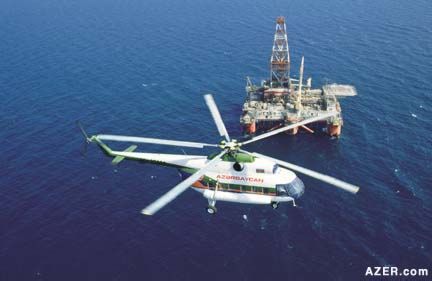|

Autumn 2000 (8.3)
Page
93
The Status of the Caspian Sea
Dividing
Natural Resources Between Five Countries
by
Khoshbakht B.Yusifzade - Vice President of SOCAR

Negotiations related to the demarcation of the Caspian Sea have
been going on for nearly a decade now among the littoral states
bordering the Caspian - Azerbaijan, Russia, Kazakhstan, Turkmenistan
and Iran.
We should note, however, that all activities carried out by the
State Oil Company of the Azerbaijan Republic (SOCAR) that relate
to the exploration and the development of deposits in the Caspian
Sea have always been based on the sectorial division of the Caspian
as determined in 1970 by the Ministry of Oil Industry of the
former USSR. SOCAR has never overstepped the sectorial boundaries
that were determined for Azerbaijan at that time.
After the collapse of the Soviet Union when the Republics gained
their independence in late 1991, discussions were initiated to
determine the status of the Caspian Sea among the Caspian littoral
states. In Azerbaijan, a working group was organized under the
directive of the President. When those early negotiations began,
Azerbaijan was the only country advocating the sectorial division
of the Caspian. However, today all the other littoral Caspian
states have agreed with the division of the Caspian Sea via the
median line method. The one exception is Iran.
Iran's Proposals
Azerbaijan has based its sea boundaries with Iran on the Astara-Hasangulu
line, which was accepted as the boundary line separating the
former Soviet Union and the Islamic Republic of Iran. After the
collapse of the Soviet Union, the Iranian side did not accept
this borderline and set forth various proposals, especially as
it relates to the exploration of the hydrocarbon resources of
the Caspian Sea.
One such proposal was that any exploration that takes place anywhere
in the Caspian Sea should be jointly owned by all five littoral
states. When this proposal was not accepted, Iran suggested that
the territory be equally divided so that each State would receive
20 percent of the sea territory regardless of how each state
actually borders on the sea. This proposal has neither legal
nor scientific basis, and thus, it goes without saying, it cannot
be accepted by the Azerbaijani side.
Reserves on the
Median Line
There are still some unresolved problems, especially in regard
to hydrocarbon resources that overlap the median line between
the two countries. For example, Azerbaijan and Turkmenistan are
still working out differences related to such a problem. Turkmenistan
has suggested a different method of determining the division
line than we have. However, we do not perceive that our differences
are so serious that they cannot be resolved in the foreseeable
future.
Although this controversy affects Azerbaijan and Turkmenistan
in relation to the Kapaz deposit, such potential problems may
arise in the future between other Caspian states as well.
Numerous proposals have been set forth to resolve such problems.
Viktor Kolyuzhny, Russia's Deputy Minister of Foreign Affairs,
who was recently appointed Plenipotentiary Representative for
issues regarding Russia's status in the Caspian, has made several
official visits to the Caspian littoral states as well as to
Baku to carry out discussions regarding this issue.
Kolyuzhny generally supports the division of the Caspian into
sectors using the median line method as it relates to the seabed.
He has proposed that the development of all the deposits and
structures that fall on the median line should be considered
as belonging equally to both countries; that is, 50 percent each,
regardless of whether the deposit falls more on one side or the
other. Presently, Azerbaijan and the other Caspian littoral states
are discussing such a solution.
_____
From Azerbaijan
International
(8.3) Autumn 2000.
© Azerbaijan International 2000. All rights reserved.
Back to Index
AI 8.3 (Autumn 2000)
AI Home
| Magazine Choice | Topics
| Store
| Contact
us
|